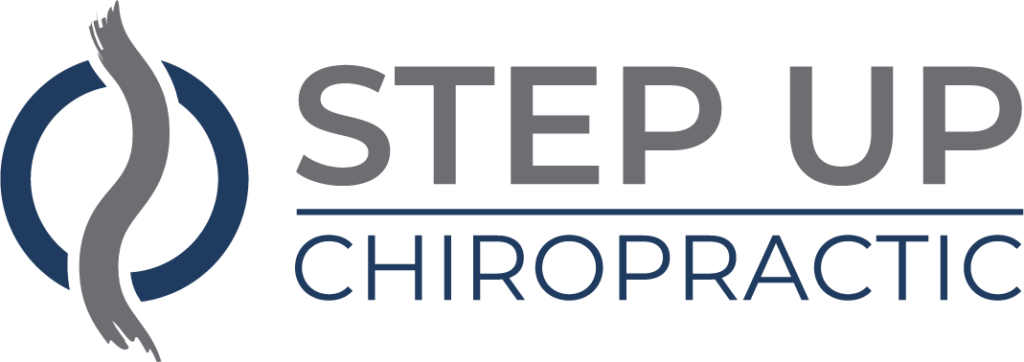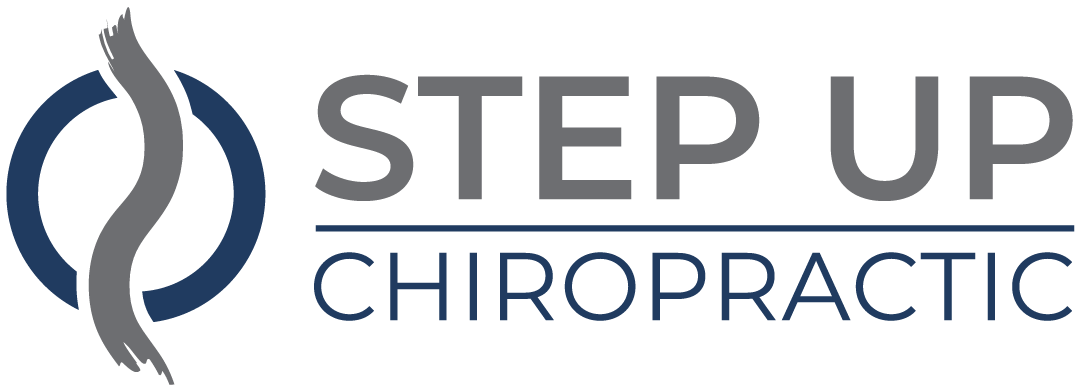If you're struggling with back pain in Honolulu, you might be surprised by the range of solutions available to you. From physical therapy that strengthens your core to acupuncture that targets pain at its source, there's a thorough approach waiting for you. You'll also find that local wellness centers offer unique treatments tailored to your needs. But what about the everyday habits that might be contributing to your discomfort? Understanding these can be essential for long-term relief and prevention. Let's explore how you can take control of your back health effectively.
Understanding Back Pain Causes
Back pain can stem from a variety of causes, making it vital to understand what's behind your discomfort. You might be experiencing pain due to muscle strain or ligament sprain, often resulting from heavy lifting, awkward movements, or even prolonged sitting.
If you've recently engaged in strenuous activity or changed your routine, this could be the culprit.
Another common cause is a herniated or bulging disc. When the soft material inside your spinal discs pushes out, it can press on nearby nerves, leading to sharp pain or tingling sensations.
Poor posture is another factor to evaluate. If you often slouch while sitting or standing, over time, this can lead to significant strain on your back muscles and spine.
Arthritis is also worth mentioning. Conditions like osteoarthritis can cause the cartilage between your joints to wear down, resulting in inflammation and pain.
If you've got a history of arthritis in your family, this may be something to keep in mind.
Sometimes, back pain can stem from more serious issues, such as infections or tumors, though these are less common.
If your pain persists or worsens, it's important to consult a healthcare professional. They can help diagnose the underlying cause and guide you toward the most appropriate treatment options.
Understanding the root of your back pain is the first step toward finding effective relief.
Benefits of Physical Therapy
When it comes to alleviating back pain, physical therapy offers a range of benefits that can greatly improve your quality of life. By engaging in targeted exercises and stretches, you can strengthen the muscles surrounding your spine, enhancing stability and reducing discomfort. A physical therapist will tailor a program specifically for you, addressing your unique needs and limitations.
One of the key benefits of physical therapy is its focus on education. Your therapist will teach you about proper body mechanics, posture, and techniques to avoid further injury. You'll gain insights on how to perform daily activities safely, which can lead to long-term relief and prevention.
In addition to physical strengthening, physical therapy often incorporates manual therapy techniques. These hands-on methods can relieve muscle tension and improve mobility, allowing you to move more freely and comfortably.
As you progress, you'll likely notice increased flexibility and range of motion, which are essential in managing back pain.
Another advantage is the holistic approach physical therapy offers. It not only addresses the physical aspects of pain but also helps you develop coping strategies for the psychological stress that can accompany chronic pain. Improved body awareness and self-management skills can empower you to take control of your recovery.
Ultimately, committing to a physical therapy regimen can lead to lasting improvements in your back pain. With the right guidance and support, you can regain your strength, enhance your mobility, and enjoy a more active lifestyle.
Yoga Practices for Relief
Finding relief from back pain can often be achieved through the practice of yoga. Incorporating specific poses into
Acupuncture Techniques in Honolulu
Acupuncture techniques in Honolulu offer a holistic approach to relieving back pain. By targeting specific points on your body, acupuncture helps restore balance and promote natural healing. You might be surprised at how effective these treatments can be in addressing the root causes of your discomfort.
When you visit an acupuncturist, they'll start by evaluating your condition. This evaluation allows them to tailor the treatment to your unique needs.
You'll likely lie down and relax as they insert thin needles into precise points along your meridians. These needles stimulate your body's energy flow, or "qi," enhancing circulation and reducing inflammation. As a result, many clients experience immediate relief or reduced pain levels after just a few sessions.
In Honolulu, you'll find a variety of practitioners specializing in acupuncture for back pain. Some may incorporate additional techniques, like cupping or moxibustion, to further enhance your treatment. These complementary methods can improve your overall experience and boost the effectiveness of acupuncture.
It's important to maintain open communication with your acupuncturist. Let them know about your specific pain areas and any other health concerns you have. This feedback will help them adjust their techniques to better suit your needs.
With regular sessions and a focus on holistic well-being, you can regain mobility and alleviate chronic back pain. So, consider scheduling an appointment to explore how acupuncture can work for you in Honolulu.
Chiropractic Care Options
Chiropractic care provides a hands-on approach to managing back pain effectively. When you visit a chiropractor, you're likely to experience various techniques aimed at realigning your spine and relieving tension in your muscles. One of the most common methods is spinal manipulation, where the chiropractor applies controlled force to specific joints. This can help improve your range of motion and reduce discomfort.
You might also explore other chiropractic techniques, such as mobilization, which involves gentle movements to increase flexibility and alleviate pain. This method is particularly useful if you prefer a less aggressive approach.
Additionally, some chiropractors employ soft tissue therapy, focusing on the muscles and connective tissues surrounding your spine. This can further enhance the benefits of spinal adjustments.
It's essential to communicate your specific back pain issues with your chiropractor. They can tailor their approach based on your unique needs and medical history. Many chiropractors also incorporate lifestyle advice, encouraging you to adopt better posture and ergonomic practices in daily activities, which can prevent future pain.
Moreover, if you're dealing with chronic back pain, consider regular chiropractic visits as part of your overall wellness plan. Consistent care can lead to long-term improvements and help you maintain an active lifestyle.
Natural Remedies and Supplements
When it comes to finding relief for your back pain, natural remedies and supplements can be a game changer.
You might consider exploring herbal treatments that target inflammation and support muscle relaxation.
Additionally, ensuring you get essential nutrients can aid in the healing process and promote overall spine health.
Herbal Treatments for Relief
Many people regularly turn to herbal treatments for relief from back pain, finding natural remedies and supplements to be effective alternatives to conventional medications.
These options can help ease discomfort without the side effects often associated with pharmaceuticals.
If you're looking to explore herbal remedies, consider the following:
- Turmeric: Known for its anti-inflammatory properties, turmeric can help reduce pain and swelling in your back.
- Willow Bark: Often called "nature's aspirin," willow bark can provide relief from pain and is a popular choice for back pain sufferers.
- Ginger: This powerful herb not only helps with inflammation but also improves circulation, promoting healing in sore muscles.
- Devil's Claw: An African herb, devil's claw has been used for centuries to alleviate pain and improve mobility.
Essential Nutrients for Healing
Essential nutrients play an important role in healing back pain and promoting overall wellness. By focusing on a well-balanced diet, you can provide your body with the essential vitamins and minerals it needs to recover effectively.
Omega-3 fatty acids, found in fish, flaxseeds, and walnuts, can help reduce inflammation, which often contributes to back pain.
Magnesium is another important nutrient that aids muscle relaxation and can alleviate tension in the back. Foods like spinach, almonds, and black beans are excellent sources of magnesium.
Additionally, vitamin D is essential for bone health and can help reduce pain by supporting calcium absorption. You can get vitamin D from sunlight, fortified foods, and fatty fish.
Don't forget about antioxidants, like vitamins C and E, which help combat oxidative stress and promote healing. Incorporate fruits like berries, citrus, and leafy greens into your diet for a boost.
If you're considering supplements, it's wise to consult with a healthcare provider to guarantee they align with your specific needs.
Importance of Posture
Your posture plays an essential role in preventing back pain, especially when you're sitting for long periods.
By using correct sitting techniques and creating ergonomic workspaces, you can greatly reduce strain on your back.
Don't forget to incorporate stretching for flexibility to keep your spine healthy and pain-free.
Correct Sitting Techniques
Maintaining proper posture while sitting can make a significant difference in how your back feels throughout the day. When you sit correctly, you not only alleviate pressure on your spine but also create a more comfortable and productive work environment.
Here are some key techniques to keep in mind:
- Keep your feet flat on the floor or on a footrest, ensuring your knees are at or slightly below hip level.
- Sit back in your chair, using the backrest for support, which helps maintain the natural curve of your spine.
- Align your ears with your shoulders and keep your head directly above your hips to avoid straining your neck.
- Take regular breaks to stand, stretch, and move around, as staying in one position for too long can lead to stiffness.
Ergonomic Workspaces Matter
While creating an ergonomic workspace might seem like a minor adjustment, it can profoundly impact your posture and overall back health.
When you set up your workspace with ergonomics in mind, you're fundamentally designing an environment that supports your body's natural alignment. This means that your chair, desk, and computer should all be at the right height for you.
Make sure your feet rest flat on the floor, and your knees are at a 90-degree angle. Your monitor should be eye level, so you don't have to strain your neck.
Don't forget about your keyboard and mouse; they should be close enough to prevent reaching, which can lead to discomfort.
Investing in ergonomic furniture can also make a difference. An adjustable chair with lumbar support encourages good posture, while a desk that allows you to alternate between sitting and standing can reduce fatigue.
Stretching for Flexibility
Creating an ergonomic workspace lays the groundwork for better posture, but incorporating stretching into your routine takes it a step further. Stretching not only enhances flexibility but also promotes proper alignment throughout your body. When you make stretching a habit, you can ease tension, reduce pain, and feel more energized in your daily activities.
Consider these emotional benefits of regular stretching:
- Relief from stress: Let go of the physical and mental strain that builds up during the day.
- Increased confidence: Stand tall and project a sense of self-assuredness.
- Improved mood: Boost your spirits and experience a greater sense of well-being.
- Enhanced performance: Move with greater ease in both work and play.
Incorporating stretches, like neck rolls and shoulder shrugs, into your daily routine can greatly improve your posture. As you stretch more, you'll find it easier to maintain a neutral spine and avoid slumping.
Local Wellness Centers
Have you explored the benefits of local wellness centers for alleviating back pain? These centers offer a holistic approach to wellness, focusing on both physical and mental well-being. You'll find various services tailored to help you manage and reduce back pain effectively.
At a local wellness center, you can access professional treatments like chiropractic care, acupuncture, and massage therapy. These experts are trained to identify the root causes of your discomfort and provide targeted relief. Regular visits can lead to significant improvements, helping you regain mobility and reduce pain levels.
In addition to hands-on therapies, many wellness centers emphasize the importance of education and self-care. You'll have the opportunity to learn about posture, ergonomics, and other lifestyle factors that contribute to back pain. Staff members often offer workshops or one-on-one sessions that empower you to take control of your health.
Furthermore, the community aspect of wellness centers shouldn't be overlooked. Surrounding yourself with like-minded individuals who share similar experiences can provide emotional support and motivation. You're not alone in your journey to recovery, and connecting with others can make the process more enjoyable.
Exercise and Strengthening Tips
To relieve back pain, focusing on core strengthening exercises can make a big difference.
Incorporating stretching techniques not only enhances flexibility but also helps in reducing tension.
Plus, engaging in low-impact activities can keep you active without straining your back further.
Core Strengthening Exercises
Strong core muscles play an essential role in alleviating back pain and improving overall stability. By focusing on core strengthening exercises, you can build a solid foundation that supports your spine. This not only helps reduce discomfort but also enhances your performance in daily activities.
Here are some core exercises you can try:
- Planks: Hold a plank position to engage your entire core, enhancing stability and strength.
- Bridges: Lift your hips while lying on your back to strengthen your glutes and lower back.
- Bird-Dogs: Alternate extending opposite arms and legs to improve balance and coordination.
- Dead Bugs: This exercise focuses on maintaining a stable core while moving your limbs, which is great for overall core stability.
Incorporating these exercises into your routine can lead to significant improvements in your back pain.
Remember to start slowly, listen to your body, and gradually increase the intensity. You'll not only ease your discomfort but also boost your confidence and resilience in facing everyday challenges.
Prioritize your core strength, and watch as your back pain begins to diminish.
Stretching Techniques Benefits
Incorporating stretching techniques into your routine can greatly enhance your back pain relief efforts. Stretching not only improves flexibility but also helps alleviate tension in your muscles, which is essential for reducing discomfort. When you stretch, you're promoting blood flow to the affected areas, allowing for quicker recovery and less stiffness.
You should focus on both static and dynamic stretches. Static stretches involve holding a position for a set period, which can help elongate tight muscles. Dynamic stretches, on the other hand, involve gentle movements that prepare your muscles for more activity. Simple stretches like the cat-cow pose or child's pose can work wonders for your back.
Additionally, consistent stretching can help improve your posture, reducing strain on your back over time. Make sure to listen to your body; if you feel pain while stretching, ease off and adjust the position.
As you become more flexible, you may find daily tasks easier, making your overall life more enjoyable.
Low-Impact Activities Suggested
Finding relief from back pain doesn't stop with stretching; incorporating low-impact activities can further strengthen your back and improve overall mobility. Engaging in these activities not only helps alleviate pain but also enhances your quality of life.
Here are some low-impact options you can try:
- Walking: A simple yet effective way to get your body moving, improve circulation, and reduce stiffness.
- Swimming: This provides resistance without putting stress on your joints, making it perfect for building strength while being gentle on your back.
- Yoga: Focusing on flexibility and core strength, yoga can help you find balance and ease tension in your back muscles.
- Cycling: Whether indoors or outdoors, cycling helps strengthen your legs and core while keeping pressure off your spine.
Incorporating these activities into your routine can lead to long-lasting relief from back pain.
Lifestyle Changes for Prevention
Making small adjustments to your daily routine can greatly reduce the risk of back pain. Start by being mindful of your posture, whether you're sitting, standing, or moving. When sitting, make sure your back is supported, your feet are flat on the floor, and your knees are at hip level.
If you work at a desk, consider using an ergonomic chair or a standing desk to promote better alignment.
Incorporate regular stretching and strengthening exercises into your daily routine. Focus on your core muscles, as a strong core provides stability to your spine. Yoga and Pilates are excellent options for improving flexibility and building strength.
Aim for at least 30 minutes of activity most days, but remember to listen to your body and adjust as needed.
Pay attention to how you lift objects. Bend your knees and keep your back straight while lifting to avoid straining your spine. When carrying heavy items, hold them close to your body to minimize stress on your back.
Lastly, evaluate your sleep habits. A supportive mattress and pillow can make a significant difference in how your body feels upon waking.
If you often wake up with stiffness or pain, it might be time to invest in new sleep gear.
Conclusion
In Honolulu, finding relief for your back pain is totally achievable with the right mix of therapies and lifestyle changes. By exploring options like physical therapy, yoga, and acupuncture, you can strengthen your body and address pain at its source. Don't forget the importance of good posture and ergonomic setups in your daily life. By committing to these strategies, you'll not only relieve your discomfort but also prevent future issues, allowing you to enjoy a healthier, more active lifestyle.




